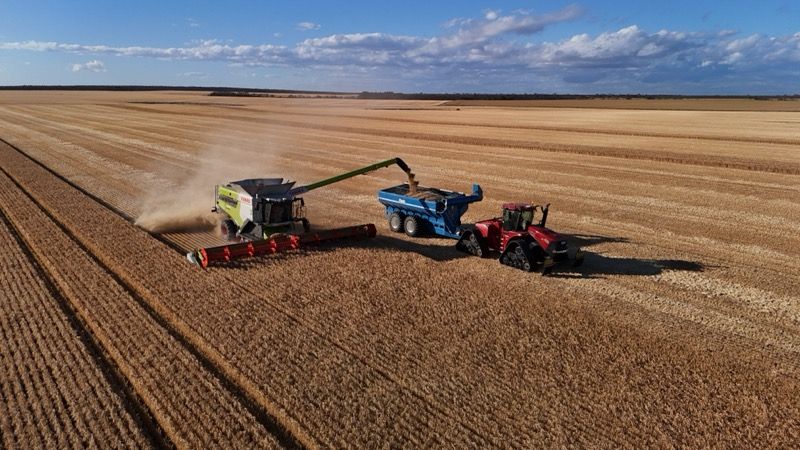My name is Ash Stewart, and together with my wife Felicity, son Travis, and daughter-in-law Isabel, we run a family cropping operation 60 kilometres northeast of Esperance, in Western Australia. My parents had a farm closer to Esperance, but in 1975, we moved to our current location.
We crop approximately 4,500 hectares, growing wheat, barley, canola and legumes. Our soils range from deep sand to traditional duplex profiles, typically consisting of 200-300mm of sand over clay. There are also some heavier soil types with a bit of free limestone.
The property is in a 400mm annual rainfall area, but this year we’ve received about 290mm, which thankfully is 100mm more than last year. The extra 100mm has made a noticeable difference. Last year’s crops were late germinating due to the dry start, with the season shutting down by September. This year, we had moisture available in April, allowing for timely sowing and better crop growth.
We have been practising no-till since the 1990s, and to better manage available water and soil moisture, we have worked even harder to retain stubble. We have also undertaken extensive clay spreading and soil amelioration to help with non-wetting issues and improve our sandy soils. In total, I would say we have improved 1,500 hectares over recent years.
Harvest kicked off recently with barley, and weather permitting, we’ll move into canola next. One of the challenges I anticipate is grain storage, and if the crop yields as well as expected, there will be a reasonable amount of grain available. It will create some on-farm issues during harvest, and also as the CBH system slows down a bit.

In terms of our cropping program, we have been involved in on-farm trials, including a canola variety trial and a large wheat breeding trial. We also do our own bit of trial work and run side-by-side variety comparisons and nitrogen strategy tests.
Our seeding typically starts in early April, depending on how our summer program progresses, which includes clay spreading, liming and gypsum applications.
Last summer, we trialled a camera sprayer for our summer program, and we are keen to develop further and refine the decision-making process around when to switch between camera and broadacre spraying. The camera sprayer certainly saved us with chemical application, but it doesn’t necessarily save time, as you tend to spray a paddock that has only say 20% coverage, which is something you would not necessarily do on a broadacre spray. We have sprayed up to 46% of a paddock with cameras, and we are still evaluating the productivity trade-offs.
In terms of community involvement, it is something that is important to us. My son Travis is president of the local soil group, which has been active for about 35 years. I was previously the Chief Bushfire Control Officer, and while I have stepped back from that role, I am still involved with the local footy club. You need to put back into the community, and we do what we can.
We are definitely proud to be Australian grain growers. Despite the challenges, I believe our industry is renowned for its achievements, considering our soils and climate. Having travelled overseas a little bit, it was interesting to see that growers in the United Kingdom and in other parts of Europe have the benefit of crops maturing often under good weather conditions. In contrast, our crops are maturing when it's dry.
The grains industry continues to evolve, and we’re excited about the opportunities ahead to improve productivity and sustainability.
